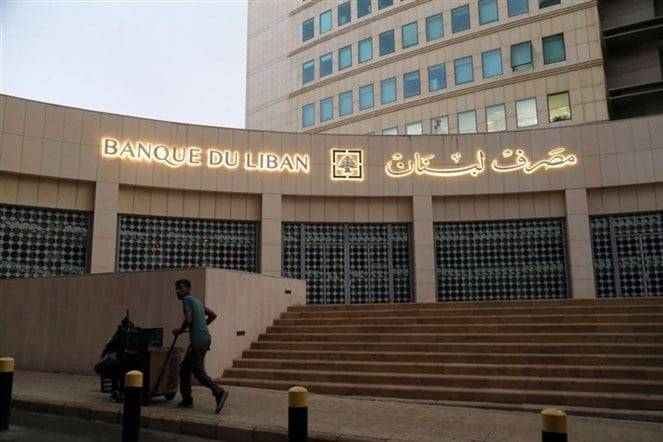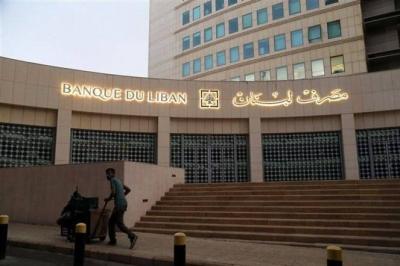The pivotal role of the Central Bank of Lebanon in currency exchange markets has dramatically diminished due to heightened currency speculation, primarily fueled by deepening uncertainty. This situation is compounded by new disruptive factors related to legal files with local and external implications, alongside pre-existing internal divisions tied to the vacancy of the presidency and escalating disputes over the powers and tasks of the caretaker government.
According to a senior banking official, the Central Bank's expected role as a major player in the currency markets and in managing liquidity has quickly transformed into a sole goalkeeper in the speculators' field, trying to fend off a deluge of aggressive attacks on the lira's value. These attacks have rapidly depleted most of the anticipated effects of the decisive intervention initiative launched by the Central Bank in the foreign exchange market on December 27 of last year. Consequently, the dollar has returned to challenging the threshold of 50,000 lira in the parallel markets and consequently in consumer markets. Amid concerns from the banking and financial sectors about potentially larger and more painful repercussions arising from this noted confrontation in the monetary arena between the monetary authority and the "ghosts" of the parallel markets, which are seizing any available dollars regardless of the quantities on offer, attention is directed toward the content of deterrent or preventive measures expected to be adopted by the Central Bank's administration before the start of the new work week tomorrow (Monday). This is especially pertinent after a "temporary" halt by many banks in accepting new exchange operations via the "Sayrafa" platform.
The decline in the volume of currency transactions recorded on the platform during the past week indicates the numerical and tangible side of the shrinking role of the Central Bank, leading the majority of demand to the parallel markets. The total transactions executed for buying and selling over five days reached approximately $322 million, equivalent to the amount recorded in one day during the first work week of this year, which totaled nearly $900 million in just three days, limited by coinciding public holidays. According to monitoring conducted by "Asharq Al-Awsat," the Central Bank had to adjust its open intervention to offer cash dollars against liquidity in lira, limiting itself to meeting individual requests within a ceiling that does not exceed exchanging approximately $2,630 at the "supported" rate of 38,000 lira, thus contributing to a significant wave of demand for dollars in the parallel markets. Meanwhile, the precautionary measures taken by most banks, related to regulatory obligations and logistical reasons, have reinforced the concentration of exchange operations outside the Sayrafa platform, causing the exchange rate to automatically rise above 49,000 lira per dollar.
In context, in addition to the usual commercial demand of around $10 million daily among licensed money changers and currency traders, these outlets witnessed an exceptional influx of lira quantities returned to customers by banks, and similar ample amounts collected by depositors at home, aiming to take advantage of the open ceiling for exchanges up to nearly 1 billion lira per individual bank account, according to the provisions of the original circular, before it was modified by oral instructions during the recent weekend holiday. It is evident, according to experts and activists in currency markets, that the obstacles facing the Central Bank's policies and technical measures to curb the decline of the lira's exchange rate are not limited to the unconstructive political ambiguity overshadowing all constitutional entitlements and critical pending issues ensnared in governmental and legislative paralysis, but also draw strength and capability to confront trends from the realities of key indicators directly influencing cash flows.
Documented statistics confirm that the increase in domestic demand for dollars to meet the subsequent rise in import data does not correspond to the size of dollar inflows into the country. This is evident particularly in the remittances from Lebanese workers abroad and expatriates, estimated to have reached $7 billion last year, alongside seasonal tourism flows that witnessed a regain of approximately $5 billion. Indeed, the imbalance in the relative equation between inflows and outflows of money has put additional pressure on the Central Bank's dollar interventions and its reserves of hard currency, especially given the ongoing activation of smuggling operations of goods and money between Lebanon and Syria, which is severely suffering from a shortage of hard currencies. This reality is reflected practically in the exchange markets of both countries with a simultaneous decline in the exchange rates of both the Lebanese and Syrian liras.
According to the latest aggregated statistics, the trade deficit rose to about $15.56 billion by the end of last year, after total imports into Lebanon exceeded $19 billion compared to about $13.6 billion in 2021. Meanwhile, total exports decreased from about $3.9 billion to approximately $3.5 billion. This has led to the expansion of the balance of payments imbalance, reaching an annual cumulative deficit of about $3.24 billion by the end of November last year, compared to a deficit of about $1.97 billion for the same period the year before.
The noted decline in the balance of payments is primarily attributed to a drop in net external assets at the Central Bank by an amount of $3 billion, which is largely equivalent to about $2.5 billion, the size of the intervention to inject cash dollars into the markets to support the lira's value. Additionally, the net external assets at banks and financial institutions contracted by $175.5 million, most of which can be linked to the monthly shares owed to over 100,000 depositors who currently benefit from the provisions of Circular 158, which allows for $800 to be withdrawn monthly, distributed equally between dollars and lira, with the Central Bank providing half the amount owed in dollars, or $200 for each client, while banks cover a similar amount through their holdings in external accounts.




